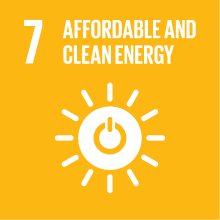ECO-FRIENDLY ORGANIC SYNTHESIS AND LABORATORY
- Academic year
- 2021/2022 Syllabus of previous years
- Official course title
- SINTESI ORGANICHE ECO-COMPATIBILI E LABORATORIO
- Course code
- CM0348 (AF:355255 AR:186532)
- Modality
- On campus classes
- ECTS credits
- 6
- Degree level
- Master's Degree Programme (DM270)
- Educational sector code
- CHIM/06
- Period
- 2nd Semester
- Course year
- 1
- Moodle
- Go to Moodle page
Contribution of the course to the overall degree programme goals
Expected learning outcomes
i) The student is asked to know the principles of Green Chemistry and some of the most modern synthetic solutions for the implementation of several types of organic reactions with reagents, solvents and catalysts with reduced environmental impact.
ii) The student is asked to know the tools and metrics that allow to quantify the efficiency and environmental performance of a chemical process in relation to the principles of Green Chemistry.
2. Ability to apply knowledge and understanding
i) The student must know how to use the concepts learned during the course, to logically examine the characteristics of environmental impact of an organic synthesis; in particular, he/she has to learn how to propose a coherent analysis of environmental efficiency and performance of a procedure by evaluating the experimental procedure through the application of metrics such as atom economy, e-factor, mass index, reaction mass efficiency, etc. and the related graphic analysis of the process.
ii) The student must know how to formulate original ideas and conclusions on the impact of a synthetic process in terms of benefits and inconveniences/aspects that can be improved from an economic and environmental standpoint. The laboratory session and the homework, as described in the training objectives, contribute to the development of this knowledge.
iii) The student must be able to identify the tools to deal with a complex problem such as the design of an organic synthesis with new reagents / products / solvents and less waste production, respecting human health and protecting the environment.
3. Judgment capacity.
i) the student is asked to know how to evaluate comparatively the effectiveness and environmental performance of different synthetic strategies in terms of choice of reaction conditions, and of chemical-physical and toxicological properties of the chemical compounds involved (reagents, catalysts, solvents, and products).
ii) the student is asked to develop a certain critical capacity on the characteristics of an organic synthesis and its impact on human health and the environment
4. Communication skills
i) the student is asked to know how to use the concepts and principles of Green Chemistry with multiple objectives, such as: a) the discussion and the critical evaluation of eco-compatible solutions for a synthetic process in a context of specialists of the sector; ii) the dissemination of the green chemistry knowledge by making non-expert interlocutors and public opinion aware of the development of an innovative synthesis chemistry in harmony with the environment, welfare and ethical needs of the modern society. The widespread use of the English language during lessons and homework development contributes to the development of these skills; iii) the interaction with the teacher and the classmates during both the lectures and the laboratory sessions, formulating coherent questions and arguing about the complex requirements of sustainability and environmental compatibility in organic synthesis.
5. Learning ability
i) the student is asked to know how to identify and apply independently the salient aspects of the concepts expressed in class;
ii) the student is asked to know how to autonomously enrich one's own training by acquiring new specialized knowledge from the scientific and technical literature in the topics covered during the course
Pre-requirements
Contents
Classroom lectures
- Introduction.
General description of the program, mode of examination, and bibliography.
Definition of Green Chemistry
Description of major green metrics such as atom economy, e-factor, mass index, reaction mass efficiency, stoichiometric factor, mass recovery parameter, and use of such metrics to quantify the efficacy and environmental performance of an organic synthesis
- Carboxylation and alkylation processes with reduced environmental impact.
Comparison between phosgene and green reagents such as dialkyl carbonates, in particular dimethyl carbonate (DMC). Analysis, benefits and metrics of model reactions for the green synthesis of carbamates and polycarbonates. Analysis of green industrial productions of polycarbonates (the melt process, and Asahi-Kasei)
Dialkyl carbonates as alkylating agents of methylene active compounds, phenols and amines. Analysis of the reaction mechanism and the process selectivity in relation to the type of catalysts involved and the reaction methods used.
- Eco-compatible solvents.
Water as a solvent for Diels-Alder cycle reactions. Introduction to the hydrophobic effect and its interpretation on an entropy basis.
Water as a reaction medium for laboratory-scale "on water" synthesis, liquid-liquid phase transfer catalysed processes.
Introductory notes on the use of water on industrial productions with both organometallic catalysis (the Ruhr-Chemie/Rhone-Poulenc process) and aquo-complexes (Wacker process).
Ionic liquids (ILs) as innovative solvents. Synthesis of ILs by conventional and halide-free alkylation of pyridines and imidazoles, and by the carbene method. Main properties of ILs (density, viscosity and polarity). The use of ILs in multi-phase catalysis and the description of the BASIL process as an model for the application of ILs on an industrial scale.
Laboratory session
6 experiments, conducted by groups of 2-3 students, will be carried out:
- Synthesis of adipic acid by oxidation of cyclohexene with hydrogen peroxide under liquid-liquid phase transfer catalysis conditions
- Synthesis of an ionic liquid by direct alkylation of methylimidazole with an alkyl halide
- Synthesis of ethyladipate under multi-phase catalysis conditions mediated by an in-situ generated ionic liquid
- O-methylation of phenol with dimethyl carbonate under base catalysis conditions
- Synthesis of an alkyl methyl carbonate by transesterification of dimethyl carbonate with a glycol ether
- N-Methylation of an amine with a methyl alkyl carbonate, catalyzed by zeolites
The reaction products will be characterized by spectroscopic techniques typical of organic chemistry (NMR and GC / MS).
Student must prepare a brief report describing the results of each experience. The report should include a graphical analysis of the reaction performed according to the model of the radial polygons.
Homework
- After having selected a paper of organic synthesis from the current literature, the student must analyze it through the application of process indicators (green metrics) and the graphical analysis of the synthesis.
- Comparative analysis of C-, O-, and N-methylation procedures with dimethyl carbonate by means of reaction metrics and graphical analysis.
- The student must analyze a modern literature review reporting on the problem of solvents. He/she must then report personal comment/conclusions on the content of the review.
Referral texts
Green Chemistry: Designing Chemistry for the Environment, P. Anastas, T. Williamson, Eds., ACS Symposium Series No. 626, 1996; Ch. 7, pp. 81-91.
• Green Chemistry, Theory and Practice, P. T. Anastas, J. C. Warner Eds., Oxford University Press 1998
• Green Chemistry, Frontiers in Benign Chemical Synthesis and Processes, P. T. Anastas, T. C. Williamson, Oxford University Press, 1998
• Introduction to Green Chemistry, A. S. Matlack, Marcel Dekker, Inc., 2001
• Green Chemistry An Introductory Text, M. Lancaster, Royal Society of Chemistry, 2002.
• Chemistry in Alternative Reaction Media, Wiley, D.J. Adams, P. J. Dyson, S. J. Taverner, Chichester (UK), 2004.
• Sato, K.; Aoki, M.; Noyori, R. Science, 1998, 281, 1646-1647; Reed, S. M.; Hutchinson, J. E. J. Chem. Edu. 2000, 77, 1627-1629.
• Riisager, Bosmann in Experiments in Green and Sustainable Chemistry Eds. Roesky and Kennepohl, Wiley-VCH 2009, 108-113,
• Dupont, J.; Consorti, C. S.; Suarez, P. A. Z.; de Souza, R. F. Org. Synth. 2002, 79, 236-240.
• Selva, M.; Perosa, A. Green Chem. 2008, 10, 457-464
• BASIL “home-made” Adipoil cloruro/etanolo/metil-imidazolo: http://www.basionics.com/
• A. Perosa, M. Selva, P. Tundo, F. Zordan, Synlett 2000, 272-274; M. Selva, P. Tundo, A. Perosa J. Org. Chem. 2002, 67, 9238-9247; M. Selva, P. Tundo, T. Foccardi, J. Org. Chem. 2005, 70, 2476-2485
• Review Articles
Class notes, lecture handouts
Recipes for laboratory experiences and format of the laboratory report.
Assessment methods
The exam consists of a series of open questions aimed at verifying the knowledge acquired by the student on the subjects of the program of the entire course (see contents section). Occasionally, the student is asked to clarify on the content of laboratory reports and the homework. The oral exam lasts from 45 to 60 minutes depending on the clarity and consistency of the answers to the asked questions. The vocabulary and the use of scientific symbology in chemistry will be also evaluated. During the exam, the use of books, notes and electronic media is not permitted.
The final score of the exam is preponderantly assessed (80%) based on the outcome of the oral test. A further evaluation comes from the laboratory reports and homework which may contribute either in positive or negative, to the final score.
Type of exam
Teaching methods
Teaching language
2030 Agenda for Sustainable Development Goals
This subject deals with topics related to the macro-area "Climate change and energy" and contributes to the achievement of one or more goals of U. N. Agenda for Sustainable Development


